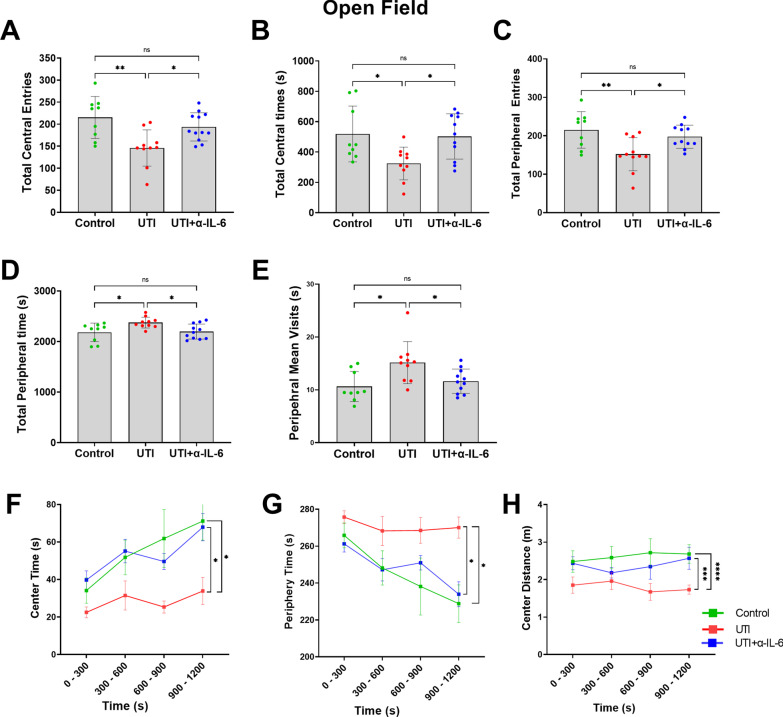Fig. 6.
Systemic IL-6 inhibition significantly improves UTI-induced impairments in the Open Field test. a, b In the open field behavioral test, UTI mice entered (ANOVA, F = 7.64, dF = 30, p = 0.0023) and significantly less time (ANOVA, F = 4.942, dF = 29, p = 0.0148) in the center zone compared to the control or UTI + α-IL-6 groups. c–e In the Open Field behavioral test, although UTI mice had fewer total entries into the peripheral zone (ANOVA, F = 6.728, dF = 30, p = 0.0041), they spent more total time (ANOVA, F = 9.889, dF = 29, p = 0.0006) and had more mean visit times in the periphery than control or UTI + α-IL-6 groups (ANOVA, F = 5.671, dF = 29, p = 0.0088). f–h Line graphs for mean time for every 5 min segment in the center and peripheral zones show that UTI mice spent significantly less time in the center and more time in the periphery compared to the control group, indicating more psychomotor agitation in the UTI mice. In contrast, treatment with α-IL-6 antibody was able to reduce the time spent in the periphery, suggesting less anxiety. Behavioral tests were performed 48 h after inoculation. Quantitative data are expressed in mean ± SD. *p < 0.05, **p < 0.01, ***p < 0.001, ****p < 0.0001

